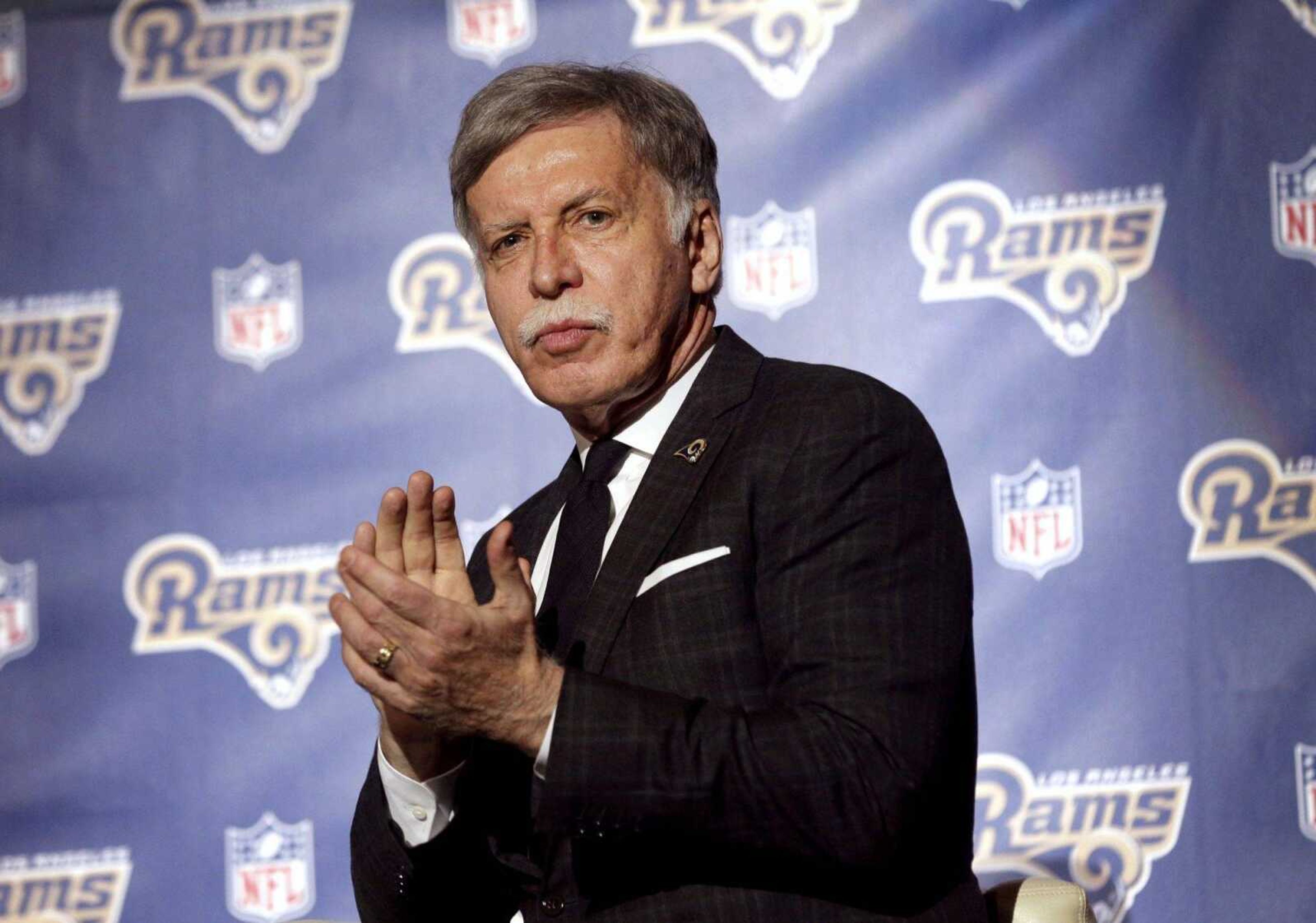ST. LOUIS -- St. Louis football fans don't have the 49ers or Seahawks to hate anymore. They have a new nemesis: Rams owner Stan Kroenke and the NFL executives who helped take away the team.
It wasn't exactly moving trucks sneaking the Colts out of Baltimore or moving the Browns from Cleveland, but last week's decision to relocate the Rams to Los Angeles left Missouri's biggest city with bruised feelings, millions of dollars of unpaid debt from the current stadium and the distinction of losing two NFL teams in three decades.
Yet, it united the oft-at-odds community -- mostly in their disdain for the billionaire Missouri native who took away their team.
Consider Thursday night's hockey game. St. Louis Cardinals president Bill DeWitt III joined Blues owner Tom Stillman for a ceremonial pre-game puck drop. The public address announcer proclaimed St. Louis "the best sports city in America." A thunderous ovation for the show of community support turned into an anti-Kroenke chant.
Terry Cook, a 34-year-old Blues fan, was among those yelling, "Kroenke sucks!" He figured St. Louis never had a chance once Kroenke decided to head west.
"Billionaires usually get what they want," Cook said. "It doesn't matter what the people want."
It may be a permanent loss for the Gateway City, which offered the team a $1 billion riverfront stadium, and for the most part, residents seemed OK with that. Across St. Louis, a common sentiment was Kroenke planned the move since buying the team in 2010 (he denies it), and NFL Commissioner Roger Goodell and other league officials were in on the fix (they deny it, too).
Mayor Francis Slay has said he wants no part of trying to attract another team. Dave Peacock, co-chairman of the task force that assembled the stadium plans that later were deemed inadequate by the league, said the whole process was more "contrived" than he imagined, and he is unlikely to try again.
St. Louis Post-Dispatch columnist Benjamin Hochman wrote St. Louis "cannot fall into the trap of thinking we're less than we are, just because we got dumped." Countless people expressed similar sentiments on social media, consoling each other at the same time.
Such a "rally round the flag" phenomenon presents itself in tough times, said Tim Bono, a lecturer in psychological and brain sciences at Washington University in St. Louis.
"There is something to be said in having a common enemy in bringing people together," Bono said. "Right now, St. Louis has a common enemy in Stan Kroenke."
There's disagreement over whether the Rams' departure about 20 years after they arrived is economically catastrophic for the city.
"People care a lot about the Rams, but in terms of thinking they're important as a source of economic activity, there's no way to argue that," said Glenn MacDonald, an economics professor at Washington University's Olin Business School.
Restaurants and hotels won't be as full, but the Rams played only eight home games a year -- nothing compared to the Blues' 41 and Cardinals' 81 home games. Many of the Rams' full-time employees are expected to make the move to California, so job losses will be relegated to part-time game-day workers.
Slay said the city stands to lose about $4 million annually in tax revenue generated by the Rams.
But Slay and other civic leaders are confident that can be made up by the fact the Edward Jones Dome, which is part of the city's convention center, will be available year-round for conventions. Taxpayers are on the hook for about $100 million to pay off the dome, which was built entirely with public money. The bond debt won't be repaid until 2021.
As for the new stadium, there was plenty of debate whether it was worth the nearly $400 million city leaders and Missouri Gov. Jay Nixon had signed on to spend, but advocates said it would have created 5,000 construction jobs, many of them for minorities, and revitalized a decaying area near the Gateway Arch.
As for the fans, there's always hockey and baseball.
"It stinks to lose (the Rams)," 24-year-old Justin Sweetin said. "But honestly, they've been so terrible in recent years that it's not as big of a loss as if the Blues or Cardinals would leave. That would be devastating."
Connect with the Southeast Missourian Newsroom:
For corrections to this story or other insights for the editor, click here. To submit a letter to the editor, click here. To learn about the Southeast Missourian’s AI Policy, click here.







